How corn is dried on an industrial scale and how to dry it at home
The most effective method to increase the shelf life of grain is drying. Corn is no exception. Feature of corn grain in that it contains 40% moisture, so for long-term storage it is still better to preserve it. But with the proper organization of drying, it is easy to achieve the desired result: preservation of taste and maximum increase in shelf life.
In this article, we will talk about the methods of drying corn at home and reveal the secrets of drying corn grain on an industrial scale.
The content of the article
Ways to dry corn at home
Drying corn at home implies the implementation of a number of rules for harvesting, its storage and heat treatment. It is important to preserve not only an attractive appearance, but also to preserve the beneficial properties of this valuable cereal crop as much as possible.
Post-harvest corn processing
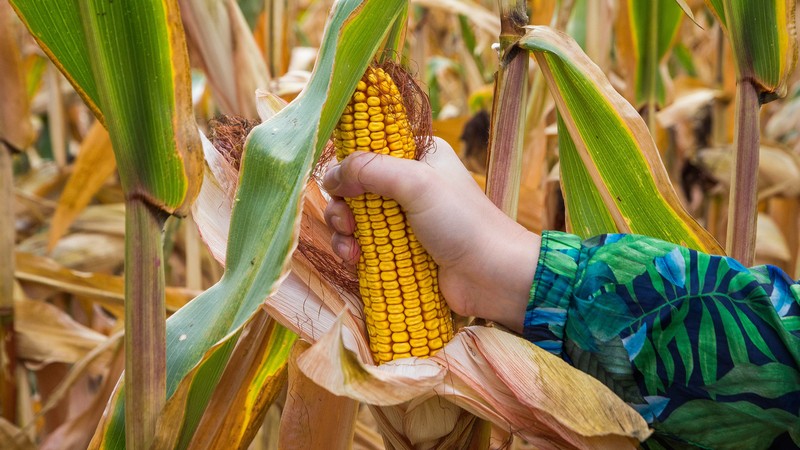
After the harvest of corn is harvested, it is the turn of its processing. Peeling corn at home is easy if you use a simple tool that you can do yourself.
This will require a piece of plastic pipe, screws and a screwdriver. A pipe with a length of 30-40 cm will do. Having departed 5 cm from the edge of the pipe, mark 8 points into which self-tapping screws with a drill are screwed. Then a cap is cut off from an ordinary long self-tapping screw.
With this edge, a self-tapping screw is inserted into a screwdriver, and the sharp end is twisted into the cob. The device is ready. Then rotate the corn at medium speed and insert it into a pipe with self-tapping screws, substituting a deep container for grains.
Note. Even a child can work with a home-made corn picker, so you can keep the little one busy and, possibly, raise a young farmer.
Post-harvest storage of wet corn
The storage time of fresh corn in the refrigerator varies from 1 to 10 days - it all depends on the variety and quality of the product... Sweet corn has the longest shelf life. When stored for a short time, it is left in the leaves and placed in the refrigerator in a plastic bag with holes for ventilation.
Fresh corn kernels have a shelf life of about three weeks. For this, the grains are prepared. Use the method described above, or remove the leaves and stigmas from the cobs, fill the pan with water, add ice, lemon juice and salt (1 tsp per 1 liter of water). Then the ear is lowered into a saucepan for 15-20 minutes. After that, the grains are separated and the water is drained through a colander. They are stored in a refrigerator in an airtight container.
Experienced gardeners recommend storing corn on the cob. Thanks to this method, the culture retains maximum useful properties.
The most long-term storage method is freezing. Cobs can be stored in the freezer for up to one and a half years. Before placing them in the freezer, do the following:
- Prepare two pots. In one of them - cold water with the addition of ice, in the other - boiled.
- Peeled corn cobs are first placed in a container with hot water for 2-3 minutes, then dipped in cold water. These actions are repeated at least three times.
- After that, the vegetables are laid out on a dry towel and dried.Then it is wrapped in cling film, distributed in food containers and sent to the freezer.
History of corn consumption
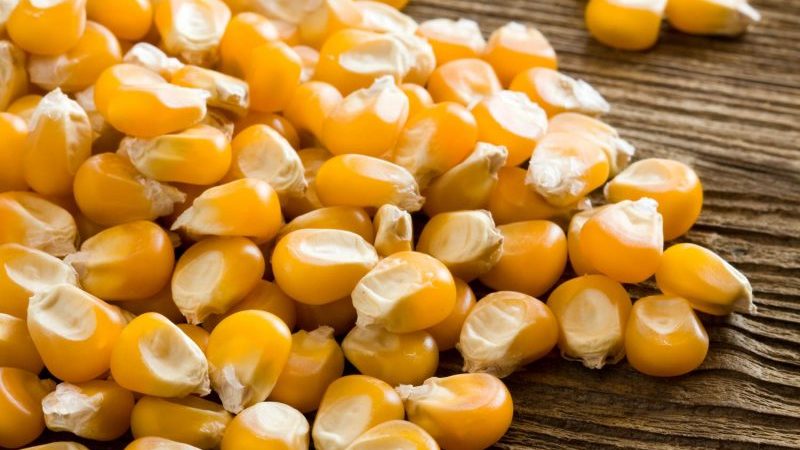
Corn is the staple food of the Indians and Mexicans. According to one of the versions, it was domesticated by the ancestors of modern Mexicans about 10 thousand years BC. e. During excavations in Mexico City, scientists found corn pollen, which is 55 thousand years old.
For Europe, corn was discovered by Christopher Columbus. Yellow cobs came to Russia from Crimea only in the 17th century. There is a version that corn is an alien or divine plant. For example, the Mayan tribe had the corn deity Ah Mun as one of the objects of worship.
According to scientists, corn used to be undersized, the ear with a panicle grew at the very top. The corn was easily pollinated by the wind, and the seeds of the "bare" cob were scattered on the ground - so new plants appeared. Nowadays, stunted corn can also be found in the fields - this is due to periodic genetic disruptions.
It is believed that a mutation occurred in ancient times, and the ear began to grow in the leaf axil. At the excavations in the "Cave of Bats", not far from the Rio Grande, in the upper layers of the cultural layer, corn looks like modern corn, in the lower one found small cobs.
Oven and dryer instructions
For drying, cobs are taken, which are harvested from late summer to late autumn. The corn is stripped of leaves, the corn silk is removed, and the ears are hung from the leaves under a canopy.
Corn dried in this way all winter feed livestock, picking off as needed. But sweet corn after such natural drying must be removed from the cob and dried.
If you have a gas oven, you can dry in it, provided that the fire does not come into contact with the chamber itself. It is important to monitor the uniformity of drying: adjust the heat, stir the grains, move the baking sheets.
To avoid moisture accumulation in any type of oven, keep the chamber door ajar.
Important! The average temperature for drying corn kernels in the oven is about 45 ° C.
In order for the corn to retain its color, before putting it in the electric dryer, the grains are kept for a few seconds in a colander over steam from a saucepan of boiling water. Then it is either dried at constant heating at 45-60 ° C, or it starts at the maximum temperature, and after an hour it is reduced.
How to dry corn silk
Harvested corn stigmas are yellow or reddish in color and have an almost subtle, distinctive odor.
How to work with stigmas:
- Remove or gently unscrew the cob leaves.
- Gather the stigmas in a bunch.
- Corn silk is pulled out or cut off.
- The raw materials are examined and sorted out, the spoiled fibers are sifted out.
- Lay the raw material in a layer of 1-2 cm on a flat, dry and clean surface for drying, set it in the fresh air in partial shade or in a well-ventilated area.
During the drying of the stigmas, the raw materials are monitored: it should not become brown, mold is unacceptable, therefore, if the weather outside the window is damp, the raw materials are brought into the room. Be sure to turn the fibers over. After about a week, dry corn silk is obtained, ready for long-term storage.
They can also be dried in the oven, where the temperature does not exceed 40 ° C.
The dried raw materials are stored in a cloth bag or cardboard box lined with paper.
Important! Corn silk should not be stored in a room with high humidity and temperature.
Subject to the conditions of harvesting and storage, the stigmas can lie without compromising quality for at least a year, they should not be stored longer - the raw material loses its useful properties over time.
How to dry corn to make popcorn
The most popular dried corn dish is popcorn. The grain for its preparation is stored in plastic bags in the freezer. Corn that is suitable for popcorn contains less starch than regular varieties. It also has 21% more fat and 21% more protein.
The seeds of the popcorn varieties are shiny and the walls are thinner than those of the classic varieties.
The following varieties are suitable for popcorn:
- Volcano;
- Pop-pop;
- Zeya;
- Ping pong;
- Hotel;
- Grandchild's joy;
- Red.
It is better to collect the "queen of the fields" for making popcorn at the last stage, it is recommended to pick ripe dried ears covered with a shiny crust. How to dry popcorn corn? The same as in other cases - the drying technology of such varieties does not differ from drying ordinary ears.
How corn is dried commercially
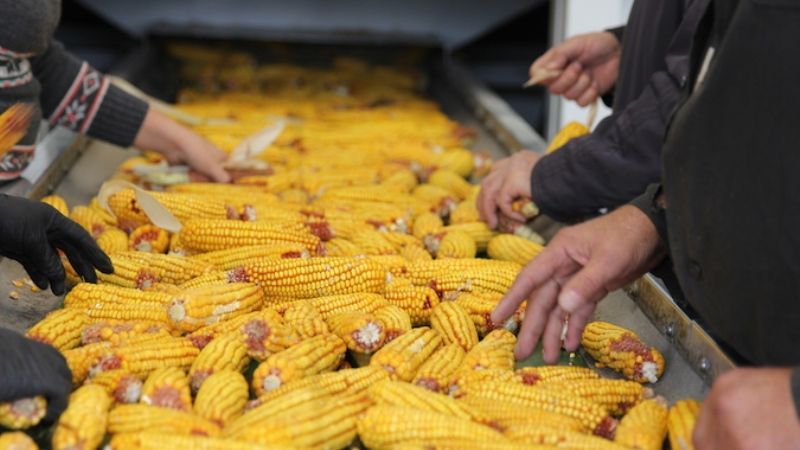
After the ears leave the elevator, they are sent to dry.... The main industrial method of drying corn seeds is drying on the cob; for this, a batch-type chamber grain dryer is used, subject to the following conditions: temperature 35-50 ° C, chamber blowing, rhythmic work schedule.
Evaporation of 1 kg of moisture from corn grain consumes approximately 8.56 MJ of heat. The efficiency of a chamber dryer is 30-35%, of a mine dryer - 55-60%. Modern drying technologies allow not only to reduce the consumption of heat energy, but also to reduce the duration of the process.
Preheating raw materials
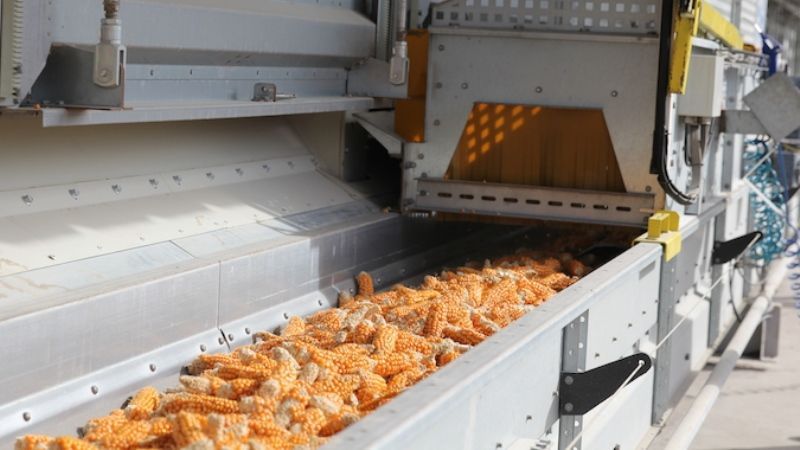
In the first stage of drying, elevated temperatures are applied, since the seed embryos in the cob core are heated slowly. Scientific experiments have shown that by heating the raw material at a temperature of 50 ° C, the drying time is reduced by 7 hours, the moisture yield of the grains is increased by 10.9%, and the productivity is increased by 22.5% compared to typical drying in the usual mode.
Differentiated drying mode
Due to the differentiated thermal conditions, the performance of dryers increases by 20-30% and even more. With a gradual increase in temperature, the rate of drying of the grains also increases. These conditions are most favorable for obtaining high quality dried corn.
Corn cob drying technology
Corn is sometimes dried on the cob, because wet plants are difficult to thresh without damaging the grain. The ears are dried to a moisture content of 16-20% to thresh and finally dry the grain.
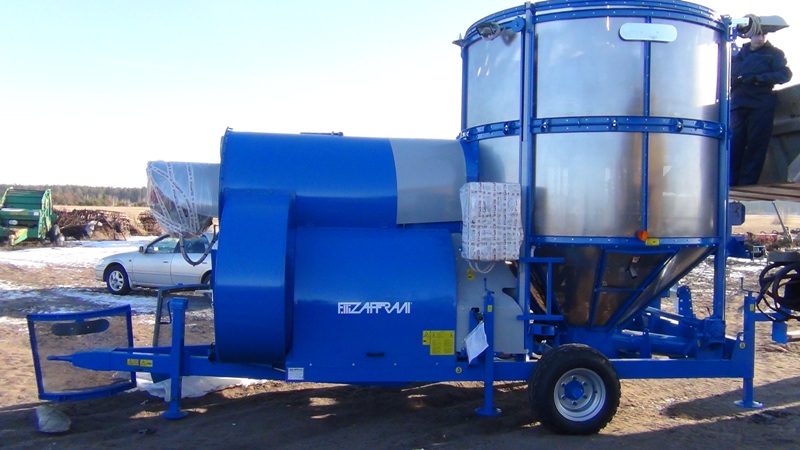
Further application
The corn is dried - what to do with it after that? Dried corn can be eaten dry, as the ancestors of the Mexicans did, but it is better to boil it... To make dry grains cook faster, they are pre-soaked. After that, dry corn grains are poured with cold or hot water and boiled for 20-40 minutes.
From boiled grains prepare salads, pastries, add them to sandwiches and rolls, to hot dishes - for example, to stews or soups, if the recipe allows. Grains can be eaten neat - they are tasty, healthy and almost harmless to the figure.
The product is used in cattle breeding as animal feed and even in fishing - as a complementary food for fish.
Conclusion
Drying corn is a simple process. You can dry grains at home and at work. Corn is a healthy snack, it is easy to make salads, canapes and other dishes from it. The low calorie content of yellow grains allows them to be consumed almost without restrictions, especially since the price of corn in the summer is low.